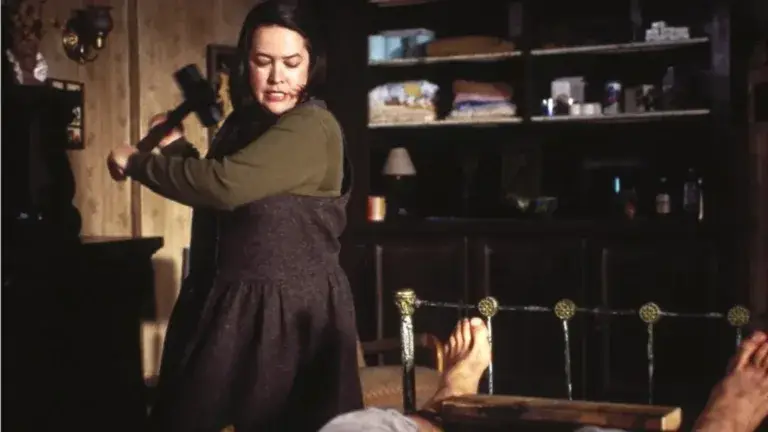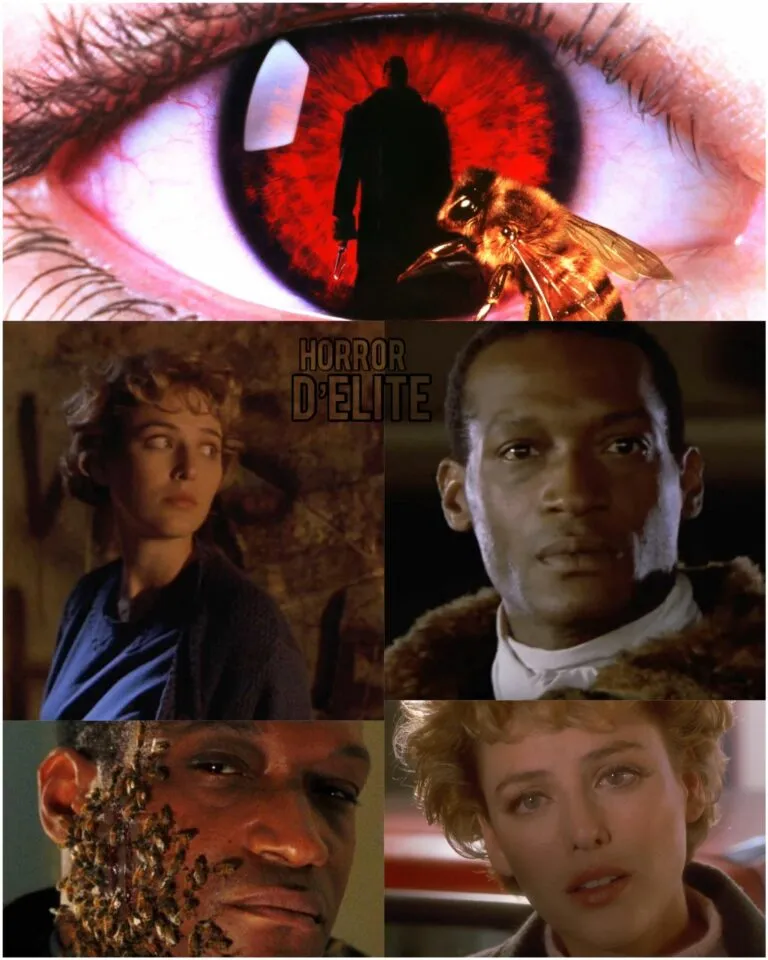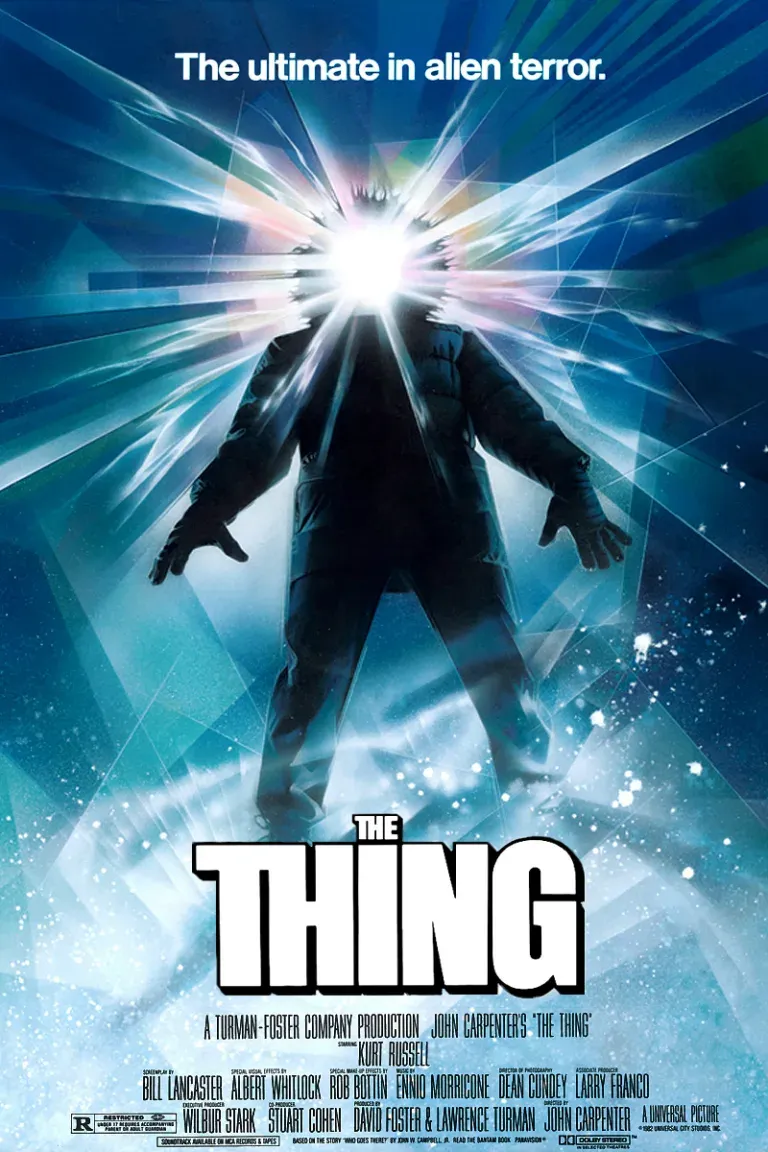Late Night with the Devil
 Late Night with the Devil
Late Night with the Devil
directed by Colin and Cameron Cairnes (2023)
PLOT
Jack Delroy, the host of the late-night talk show “Night Owls,” prepares a special episode for Halloween. One of the guests on the show is young Lilly, who survived a mass suicide perpetrated within a satanic cult…
 REVIEW
REVIEW
On the evening of October 31, 1992, the BBC aired a fake live program to celebrate Halloween. A significant portion of the audience, those who had not listened to or had listened distractedly to the
introductory message, mistook the footage, titled “Ghostwatch,” for a genuine live program investigating the paranormal. To enhance the impression of realism, a well-known presenter and television host were chosen to play themselves. The result was more destructive than the famous “Martian invasion,” the radio prank about the War of the Worlds devised by Orson Welles, and caused the suicide of a teenager and symptoms of post-traumatic stress disorder in some children. Both shows demonstrated the potential for media manipulation and the power of the human imagination to create fictional realities.
Building on this premise is “Late Night with the Devil,” a film by the Cairnes brothers Colin and Cameron, who return with great style to the realm of televised horror.
The two Australian brothers pleasantly surprised us with “Scare Campaign” (released in Italy by Midnight Factory), a film that blended mockumentary, snuff, and slasher with skill. But while the 2016 film spoke a “youthful” language, this “Late Night with the Devil” from 2023 instead draws on the atmosphere of late 1970s America, all within the confines of a television studio.
The Cairnes’ new work stands out for its maturity and sophistication in playing with language and presenting a television setting of the era, specifically 1977. The film fits into a coherent and evolving artistic path for the two Australians, exploring themes such as gaze,
perception, the paranormal, and social critique.
 Jack Delroy, masterfully portrayed by David Dastmalchian, seeks to boost the ratings of his declining talk show by hosting a girl who survived a satanic cult. Alongside the young guest are a parapsychologist, a medium, and a magician skilled in supernatural scams (clearly inspired by the figure of magician and illusionist James Randi, who, through the CICAP association, promoted scientific and critical investigation into the paranormal). An interesting and potentially explosive situation. The film, “clumsily” using the found footage style (since the broadcast actually aired, the sense of “discovery” that all found footage films typically offer the viewer is lost), gradually unfolds during the first part, allowing us to empathize with Delroy and immerse ourselves in the atmosphere of the television studios of the period. The real-time unfolding of the program, the photography, the 4:3 format, and the slight blurring of the images transport us back to the days of the wonderful and comforting cathode-ray light, completely immersing us in the late-night talk show episode (including commercial breaks) and allowing us to deeply understand the protagonist, both in his television role and in his private life, thanks to valuable behind-the-scenes glimpses.
Jack Delroy, masterfully portrayed by David Dastmalchian, seeks to boost the ratings of his declining talk show by hosting a girl who survived a satanic cult. Alongside the young guest are a parapsychologist, a medium, and a magician skilled in supernatural scams (clearly inspired by the figure of magician and illusionist James Randi, who, through the CICAP association, promoted scientific and critical investigation into the paranormal). An interesting and potentially explosive situation. The film, “clumsily” using the found footage style (since the broadcast actually aired, the sense of “discovery” that all found footage films typically offer the viewer is lost), gradually unfolds during the first part, allowing us to empathize with Delroy and immerse ourselves in the atmosphere of the television studios of the period. The real-time unfolding of the program, the photography, the 4:3 format, and the slight blurring of the images transport us back to the days of the wonderful and comforting cathode-ray light, completely immersing us in the late-night talk show episode (including commercial breaks) and allowing us to deeply understand the protagonist, both in his television role and in his private life, thanks to valuable behind-the-scenes glimpses.
“Late Night with the Devil” is a solid film that skillfully balances humor with horror, thanks to David Dastmalchian’s brilliant portrayal of Jack Delroy. Dastmalchian is an actor who has built a fascinating career, working brilliantly with Nolan, Lynch, and Villeneuve. From the outset, his Delroy provides moments of amusement and, above all, extremely convincing ones, with facial expressions perfectly suited to the television entertainment of that period. And when horror creeps into the studio during the desperate attempt to climb the ratings (literally inviting the “devil” with devastating consequences), the film’s tone shifts dramatically, his acting tension increases as the pace of the work accelerates towards the imaginative and infernal climax, dragging both real and diegetic spectators along with it.
 CONCLUSION
CONCLUSION
In addition to the obvious “The Exorcist” and “Demons 2” (but also a multitude of films about satanic cults), the film rather explicitly references “StageFright,” and although it doesn’t say anything revolutionary in terms of content, its incredible attention to detail and care for visual aesthetics make it an engaging and evocative cinematic experience for the viewer.


 REVIEW
REVIEW CONCLUSION
CONCLUSION




